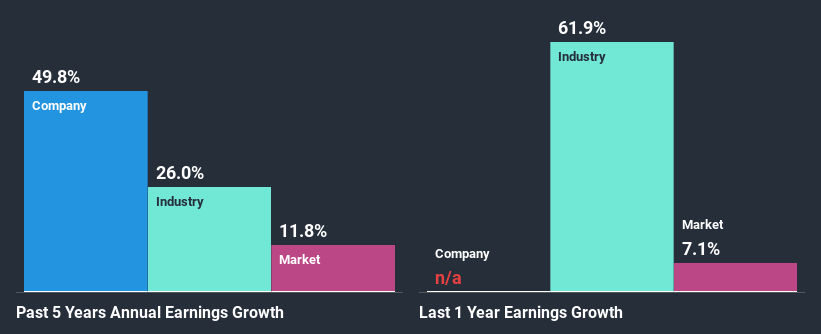Is Weakness In Dundee Precious Metals Inc. (TSE:DPM) Stock A Sign That The Market Could be Wrong Given Its Strong Financial Prospects?
It is hard to get excited after looking at Dundee Precious Metals' (TSE:DPM) recent performance, when its stock has declined 6.9% over the past three months. However, stock prices are usually driven by a company’s financial performance over the long term, which in this case looks quite promising. Specifically, we decided to study Dundee Precious Metals' ROE in this article.
Return on Equity or ROE is a test of how effectively a company is growing its value and managing investors’ money. Put another way, it reveals the company's success at turning shareholder investments into profits.
View our latest analysis for Dundee Precious Metals
How Do You Calculate Return On Equity?
The formula for ROE is:
Return on Equity = Net Profit (from continuing operations) ÷ Shareholders' Equity
So, based on the above formula, the ROE for Dundee Precious Metals is:
25% = US$199m ÷ US$805m (Based on the trailing twelve months to December 2020).
The 'return' refers to a company's earnings over the last year. Another way to think of that is that for every CA$1 worth of equity, the company was able to earn CA$0.25 in profit.
What Is The Relationship Between ROE And Earnings Growth?
Thus far, we have learned that ROE measures how efficiently a company is generating its profits. Depending on how much of these profits the company reinvests or "retains", and how effectively it does so, we are then able to assess a company’s earnings growth potential. Assuming everything else remains unchanged, the higher the ROE and profit retention, the higher the growth rate of a company compared to companies that don't necessarily bear these characteristics.
Dundee Precious Metals' Earnings Growth And 25% ROE
Firstly, we acknowledge that Dundee Precious Metals has a significantly high ROE. Second, a comparison with the average ROE reported by the industry of 10% also doesn't go unnoticed by us. So, the substantial 50% net income growth seen by Dundee Precious Metals over the past five years isn't overly surprising.
As a next step, we compared Dundee Precious Metals' net income growth with the industry, and pleasingly, we found that the growth seen by the company is higher than the average industry growth of 26%.
The basis for attaching value to a company is, to a great extent, tied to its earnings growth. What investors need to determine next is if the expected earnings growth, or the lack of it, is already built into the share price. This then helps them determine if the stock is placed for a bright or bleak future. What is DPM worth today? The intrinsic value infographic in our free research report helps visualize whether DPM is currently mispriced by the market.
Is Dundee Precious Metals Using Its Retained Earnings Effectively?
Dundee Precious Metals' three-year median payout ratio to shareholders is 14%, which is quite low. This implies that the company is retaining 86% of its profits. So it seems like the management is reinvesting profits heavily to grow its business and this reflects in its earnings growth number.
While Dundee Precious Metals has been growing its earnings, it only recently started to pay dividends which likely means that the company decided to impress new and existing shareholders with a dividend. Upon studying the latest analysts' consensus data, we found that the company's future payout ratio is expected to drop to 8.5% over the next three years.
Conclusion
In total, we are pretty happy with Dundee Precious Metals' performance. Specifically, we like that the company is reinvesting a huge chunk of its profits at a high rate of return. This of course has caused the company to see substantial growth in its earnings. With that said, the latest industry analyst forecasts reveal that the company's earnings growth is expected to slow down. To know more about the latest analysts predictions for the company, check out this visualization of analyst forecasts for the company.
This article by Simply Wall St is general in nature. It does not constitute a recommendation to buy or sell any stock, and does not take account of your objectives, or your financial situation. We aim to bring you long-term focused analysis driven by fundamental data. Note that our analysis may not factor in the latest price-sensitive company announcements or qualitative material. Simply Wall St has no position in any stocks mentioned.
Have feedback on this article? Concerned about the content? Get in touch with us directly. Alternatively, email editorial-team (at) simplywallst.com.


